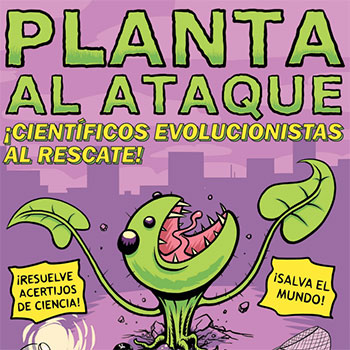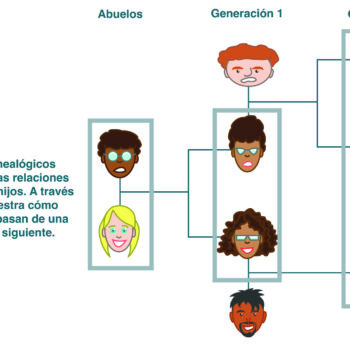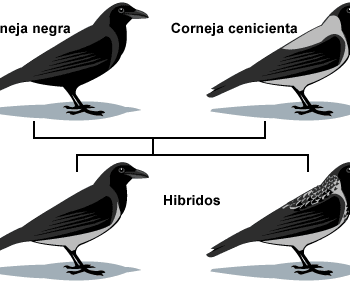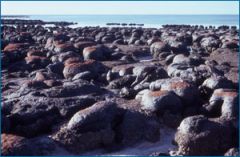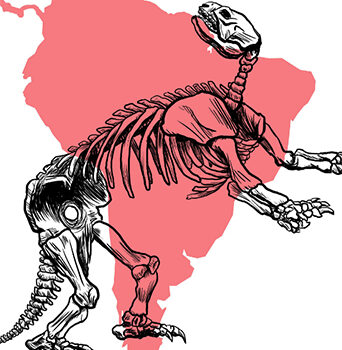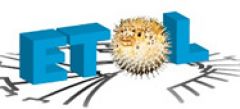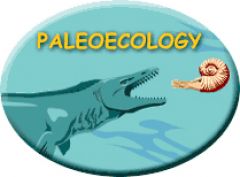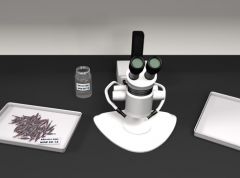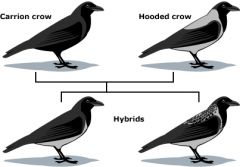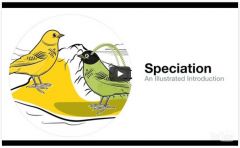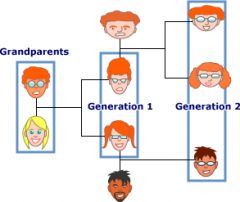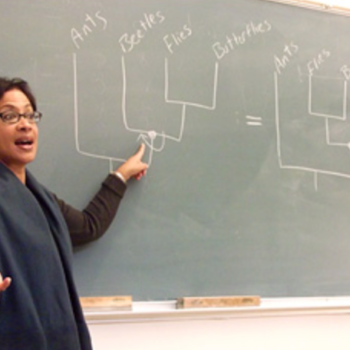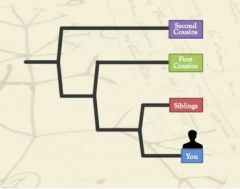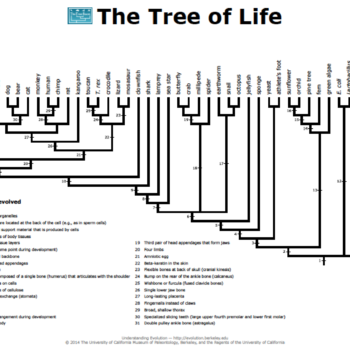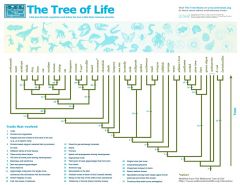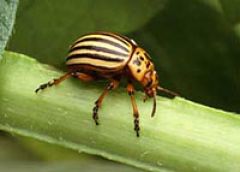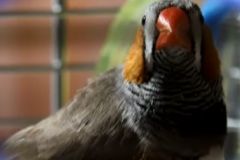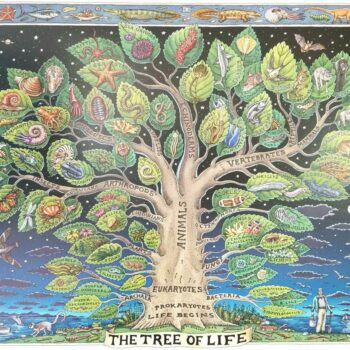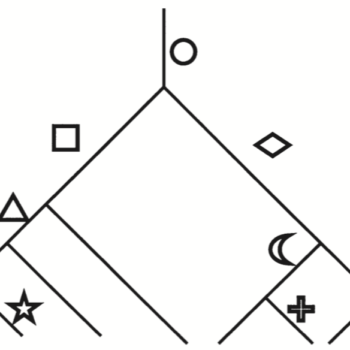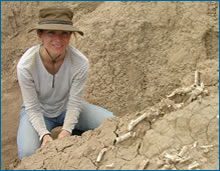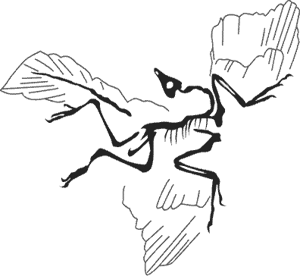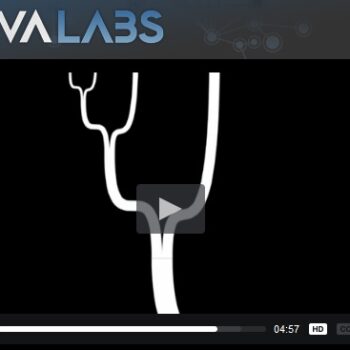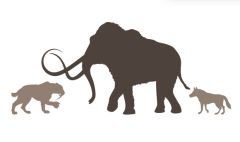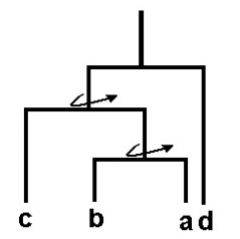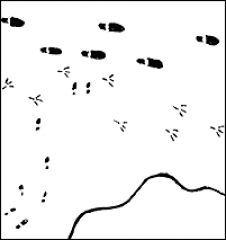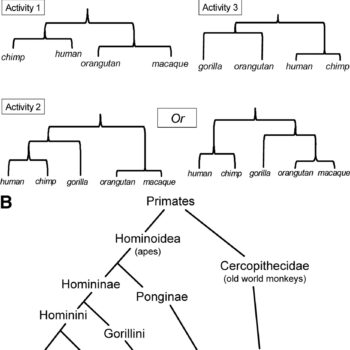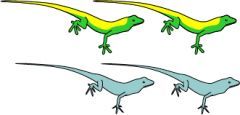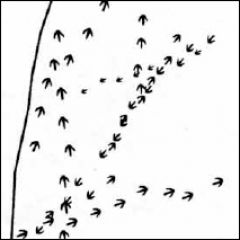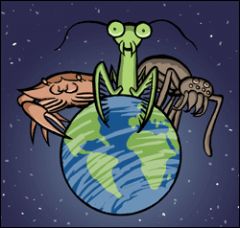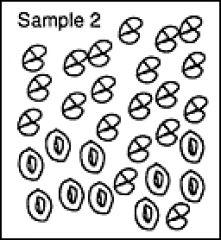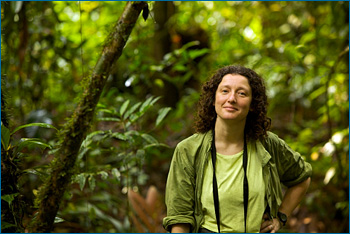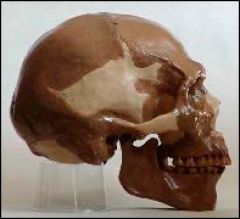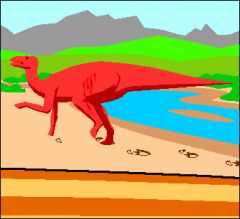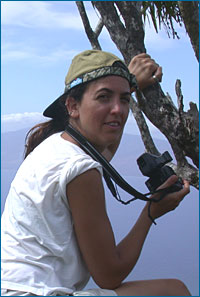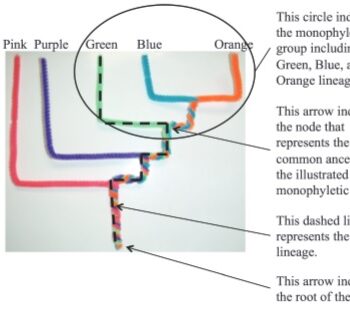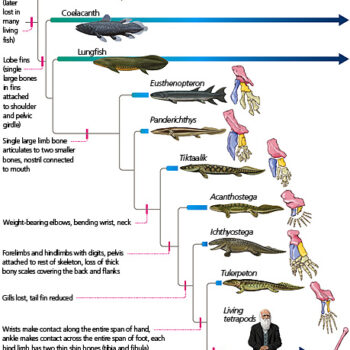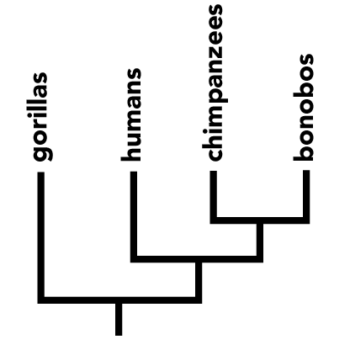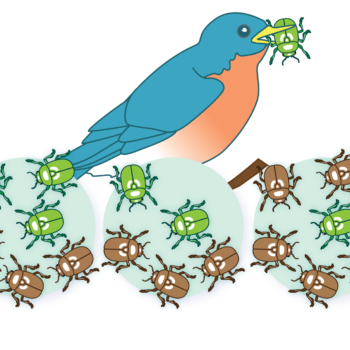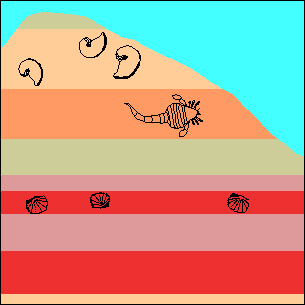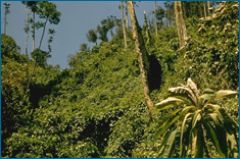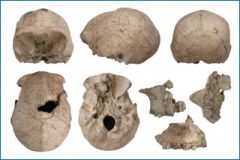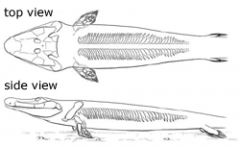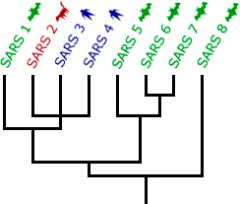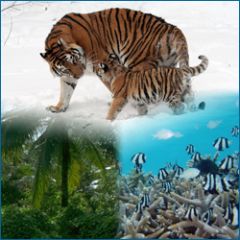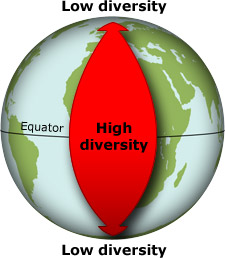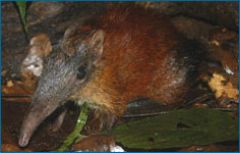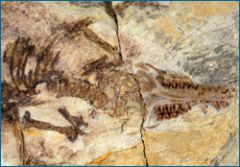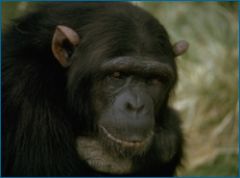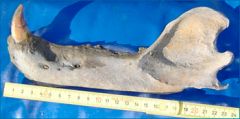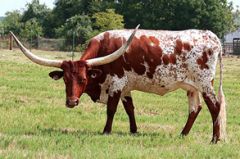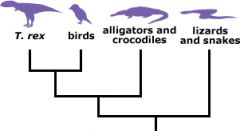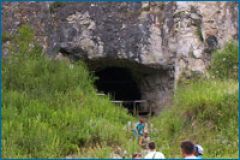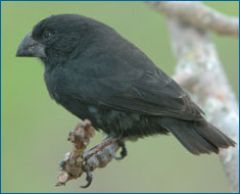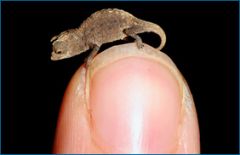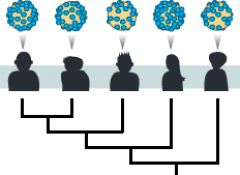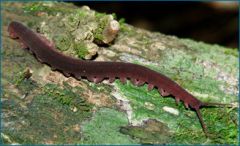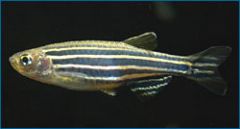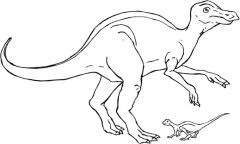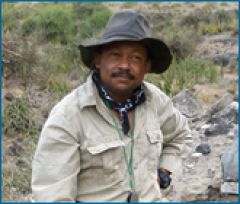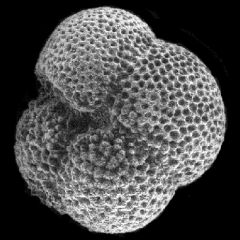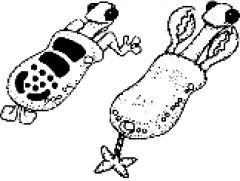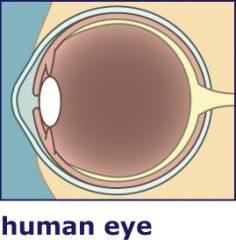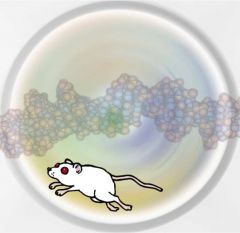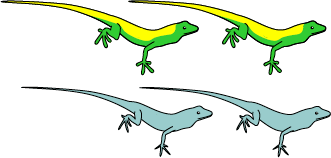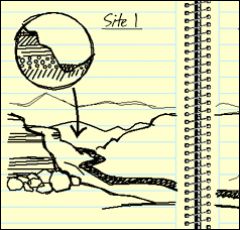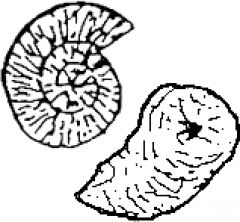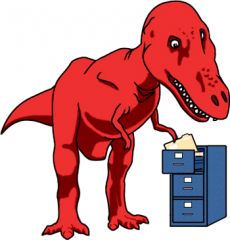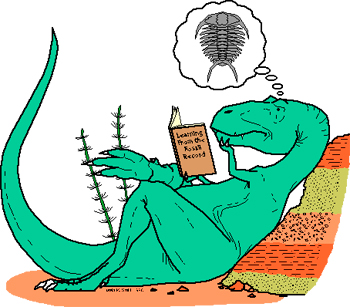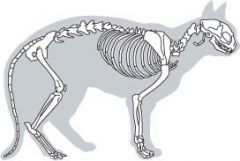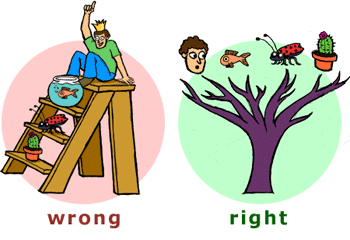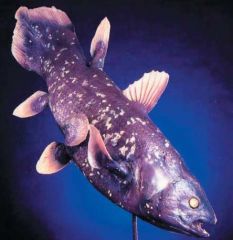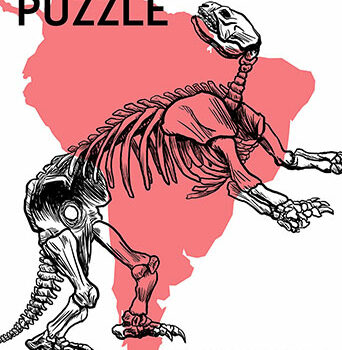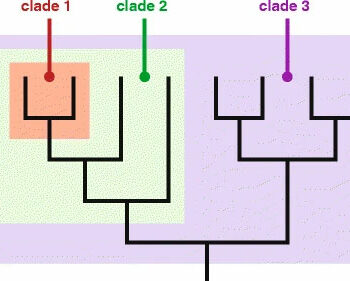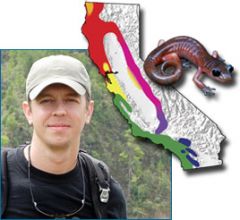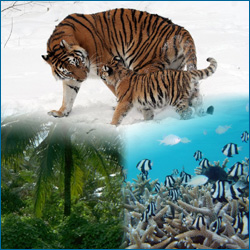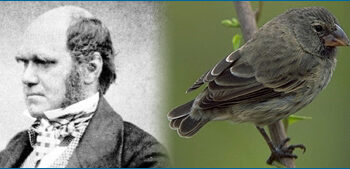Search by:
Found 101 resources:
Planta al ataque
Grade Level(s):
- 6-8
- 9-12
Source:
- UC Museum of Paleontology
Resource type:
- Classroom activity
- Comic
Time: 50 minutes
Overview
En este cómic/libro de actividades, conocerás a científicos que utilizan ideas evolutivas para resolver problemas médicos. También aprenderás sobre los árboles evolutivos mientras resuelves rompecabezas científicos y completas una actividad.
Plant on a Rampage
Grade Level(s):
- 6-8
- 9-12
Source:
- UC Museum of Paleontology
Resource type:
- Classroom activity
- Comic
Time: 50 minutes
Overview
In this printable comic/activity book, you'll meet scientists who use evolutionary ideas to solve medical problems. You'll also learn about evolutionary trees while you solve science puzzles and complete a craft.
Semejanzas y diferencias: Comprendamos las homologías y evolución convergente (nivel secundaria)
Grade Level(s):
- 6-8
Source:
- UC Museum of Paleontology
Resource type:
- Online activity or lab
Time: 30 minutes
Overview
Esta investigación interactiva explica qué son las homologías, cómo reconocerlas y cómo es que evolucionan.
Evidencias de la Evolución: La ciencia de la evolución
Grade Level(s):
- 6-8
- 9-12
Source:
- UC Museum of Paleontology
Resource type:
- Tutorial
Time: 30-40 minutes
Overview
Semejanzas y diferencias: Comprendamos las homologías y evolución convergente (nivel bachillerato)
Grade Level(s):
- 9-12
Source:
- UC Museum of Paleontology
Resource type:
- Online activity or lab
Time: 30 minutes
Overview
Esta investigación interactiva explica qué son las homologías, cómo reconocerlas y cómo es que evolucionan.
La historia de la vida: La observación de los patrones
Grade Level(s):
- 9-12
Source:
- UC Museum of Paleontology
Resource type:
- Tutorial
Time: 30-40 minutes
Overview
La ciencia usa muchas evidencias diferentes para reconstruir los árboles filogenéticos que nos muestran como se relacionan las especies entre sí.
Este artículo se encuentra en Evolución 101.
La especiación
Grade Level(s):
- 9-12
Source:
- UC Museum of Paleontology
Resource type:
- Tutorial
Time: 30 minutes
Overview
Explicar qué es una especie no es tan fácil como puede parecer. Descubre como la biología define especie y cómo surgen las nuevas especies.
Este artículo se encuentra en Evolución 101.
Del caldo primigenio a las células: El origen de la vida
Grade Level(s):
- 9-12
Source:
- UC Museum of Paleontology
Resource type:
- Tutorial
Time: 20 minutes
Overview
Profundiza en los conocimientos actuales sobre el origen de la vida y en cómo los científicos y las científicas son capaces de investigar en los detalles de acontecimientos tan antiguos.
Un rompecabezas Pleistoceno: Extinctión en América del Sur
Grade Level(s):
- 6-8
- 9-12
Source:
- UC Museum of Paleontology
Resource type:
- Comic
Time: 20 minutes
Overview
En este comic podrás seguir la investigación que hicieron María y Miguel para resolver un misterio paleontológico. Hace más de 11000 años, más del 80% de las especies de grandes animales de Sudamérica se extinguieron. ¿Por qué pasó? (Disponible en inglés, español y portugués.)
Great Fossil Find
Grade Level(s):
- 6-8
- 9-12
- 13-16
Source:
- ENSI
Resource type:
- Classroom activity
Time: 40 minutes
Overview
Students are taken on an imaginary fossil hunt and hypothesize as to the identity of the creature they discover. Students revise their hypotheses as new evidence is "found."
Investigating a Deep Sea Mystery
Grade Level(s):
- 9-12
Source:
- ETOL
Resource type:
- Lab activity
Time: 4-5 class periods
Overview
In this lab activity, students examine authentic morphological and phylogenetic data of three fish families and then pose and test alternative hypotheses about the fishes' classification.
Making Cladograms
Grade Level(s):
- 9-12
Source:
- ENSI
Resource type:
- Classroom activity
Time: One class period
Overview
This lesson introduces students to the building of cladograms as evolutionary trees, showing how shared derived characters can be used to reveal degrees of relationship.
From soup to cells – The origin of life
Grade Level(s):
- 9-12
Source:
- UC Museum of Paleontology
Resource type:
- Tutorial
Time: 20 minutes
Overview
Delve into our current understandings of the origins of life and how scientists are able to investigate the details of such ancient events.
This article is located within Evolution 101.
Stories from the Fossil Record
Grade Level(s):
- 6-8
- 9-12
Source:
- UC Museum of Paleontology
Resource type:
- Online activity or lab
Time: One to two class periods
Overview
This web-based module provides students with a basic understanding of how fossils can be used to interpret the past.
Stickleback Evolution Virtual Lab
Grade Level(s):
- 9-12
- 13-16
Source:
- Howard Hughes Medical Institute
Resource type:
- Online activity or lab
Time: 3 hours
Overview
This virtual lab teaches skills of data collection and analysis to study evolutionary processes using stickleback fish and fossil specimens.
Speciation: The basics
Grade Level(s):
- 9-12
Source:
- UC Museum of Paleontology
Resource type:
- Tutorial
Time: 30 minutes
Overview
Figuring out what species are is not as easy as one might think. Find out how biologists define species and how new species evolve.
This article is located within Evolution 101.
Speciation: An illustrated introduction
Grade Level(s):
- 6-8
- 9-12
- 13-16
Source:
- TED-ed
Resource type:
- Video
Time: 15 minutes
Overview
This video illustrates the speciation process in birds to help explain the basis of earth's biodiversity. Registration may be required to view the discussion and multiple choice questions that accompany the video.
Similarities and differences: Understanding homology and convergent evolution
Grade Level(s):
- 9-12
Source:
- UC Museum of Paleontology
Resource type:
- Online activity or lab
Time: 30 minutes
Overview
This interactive investigation explains what homologies are, how to recognize them, and how convergent traits evolve.
Two- and ten-minute trees
Grade Level(s):
- 3-5
- 6-8
- 9-12
- 13-16
Source:
- UC Museum of Paleontology
Resource type:
- Classroom activity
Time: 2-10 minutes
Overview
Use these quick and simple classroom activities to better develop your students' tree-thinking skills. Each takes just a few minutes and helps reinforce key ideas about tree reading and common ancestry.
Tree thinking basics
Grade Level(s):
- 9-12
- 13-16
Source:
- National Evolutionary Synthesis Center
Resource type:
- Video
Time: 6 minutes
Overview
Tree thinking, or phylogenetics, is an important way of understanding evolutionary relationships. Reading trees correctly can pose some challenges. This video introduces the basics of three reading and addresses common problems in tree reading.
This resource is available from the National Evolutionary Synthesis Center
Tree of Life poster without images (medium)
Grade Level(s):
- 3-5
- 6-8
- 9-12
- 13-16
Source:
- UC Museum of Paleontology
Resource type:
- Poster
Time: 2-10 minutes
Overview
Print this 18x24" poster for your classroom wall. For ideas about how to use the poster in your class, visit Two- and Ten-minute Trees">Two- and Ten-minute Trees.
Tree of Life poster without images (large)
Grade Level(s):
- 3-5
- 6-8
- 9-12
- 13-16
Source:
- UC Museum of Paleontology
Resource type:
- Poster
Time: 2-10 minutes
Overview
Print this 28x36" poster for your classroom wall. For ideas about how to use the poster in your class, visit Two- and Ten-minute Trees.
Tree of life poster with images (large)
Grade Level(s):
- 3-5
- 6-8
- 9-12
- 13-16
Source:
- UC Museum of Paleontology
Resource type:
- Poster
Time: 2-10 minutes
Overview
Print this 28x36" poster for your classroom wall. For ideas about how to use the poster in your class, visit View details »
Relevance of evolution: Agriculture
Grade Level(s):
- 9-12
Source:
- UC Museum of Paleontology
Resource type:
- Article
Time: 20-30 minutes
Overview
Explore just a few of the many cases in which evolutionary theory helps us secure and improve the world's crops. Genetic diversity, disease resistance and pest control are highlighted.
Predicting evolutionary relationships
Grade Level(s):
- 9-12
Source:
- NOVA
Resource type:
- Classroom activity
Time: 1 hour
Overview
Students compare the sequence of amino acids in a gene shared between humans and six other organisms and infer evolutionary relationships among the species.
Modeling Evolutionary Relationships with Trees
Grade Level(s):
- 6-8
- 9-12
Source:
- Shape of Life
Resource type:
- Classroom activity
Time: 100-120 minutes
Overview
In this lesson, students will examine a beautiful tree of life poster by artist Ray Troll and use it as a launchpad to explore evolutionary, or phylogenetic trees. Students will take a pre-assessment to address misconceptions about phylogenetic trees before completing a modeling activity to give them a better understanding of how trees are used to model evolutionary relationships.
The great clade race: Zombie Edition
Grade Level(s):
- 9-12
- 13-16
Source:
- Martindale, Rowan and Goldsmith, David
Resource type:
- Classroom activity
Time: 30-50 minutes
Overview
This activity uses a simple puzzle to get students to use cladistic thinking without bogging them down with terminology.
The genes that lie beneath: The work of Leslea Hlusko
Grade Level(s):
- 9-12
- 13-16
Source:
- UC Museum of Paleontology
Resource type:
- Research profile
Time: 40 minutes
Overview
Evolutionary biologist Leslea Hlusko's research takes her from the deserts of Ethiopia, where she hunts for hominid and primate fossils, to a baboon colony in San Antonio where she takes thousands of measurements of the primates' imposing canines. This research profile describes how the two projects are linked by a hunt for genetic variation, a key component of natural selection.
The Evolution of Flight in Birds
Grade Level(s):
- 9-12
Source:
- UC Museum of Paleontology
Resource type:
- Online activity or lab
Overview
This interactive module examines evidence from the fossil record, behavior, biomechanics and cladistic analysis to interpret the sequence of events that led to flight in the dinosaur lineage.
The Evolution Lab
Grade Level(s):
- 9-12
Source:
- NOVA Labs
Resource type:
- Lab activity
Time: 3 hours
Overview
The Evolution Lab contains two main parts. In the first, students build phylogenetic trees themed around the evidence of evolution, including fossils, biogeography, and similarities in DNA. In the second, students explore an interactive tree of life and trace the shared ancestry of numerous species.
McKittrick Fossil Find Classroom Activity
Grade Level(s):
- 3-5
- 6-8
- 9-12
Source:
- UC Museum of Paleontology
Resource type:
- Classroom activity
Time: 50 minutes
Overview
In this lesson, students play the roles of paleontologists on a dig. They “unearth” a few fossils at a time and attempt to reconstruct the animal the fossils represent.
Mantis shrimp shoulder their evolutionary baggage and bluff
Grade Level(s):
- 6-8
- 9-12
- 13-16
Source:
- UC Museum of Paleontology
Resource type:
- Article
Time: 30 minutes
Overview
Like all organisms, mantis shrimp carry baggage from their evolutionary history. Find out how this baggage has coaxed them into a deadly bluffing game.
Making 3D phylogenetic trees with mobiles
Grade Level(s):
- 9-12
Source:
- Carolina
Resource type:
- Classroom activity
Time: 30 minutes
Overview
Students create three-dimensional trees in the form of mobiles so that the branching nodes pivot. Students can manipulate the mobile to see the relationships more clearly and combat common misconceptions about trees.
Tennis Shoe Detectives
Grade Level(s):
- 3-5
Source:
- Heindel, Sharon
Resource type:
- Classroom activity
Time: Two 40-minute periods
Overview
Students make observations, examine data, and form hypotheses about a set of footprints and what they can tell us.
Teaching the Process of Molecular Phylogeny and Systematics: A Multi-Part Inquiry-Based Exercise
Grade Level(s):
- 9-12
- 13-16
Source:
- Lents, Nathan, et al
Resource type:
- Lab activity
Time: 1 to 4 periods
Overview
Students explore molecular data from Homo sapiens and four related primates and develop hypotheses regarding the ancestry of these five species by analyzing DNA sequences, protein sequences, and chromosomal maps.
Lines of evidence: The science of evolution
Grade Level(s):
- 6-8
- 9-12
Source:
- UC Museum of Paleontology
Resource type:
- Tutorial
Time: 30-40 minutes
Overview
The theory of evolution is broadly accepted by scientists — and for good reason! Learn about the diverse and numerous lines of evidence that support the theory of evolution.
It’s All Relative
Grade Level(s):
- 3-5
Source:
- UC Museum of Paleontology
Resource type:
- Classroom activity
Time: One class period
Overview
In this lesson, students find pictures of living things and arrange them in collages, categorizing them according to which they think are more closely related to which.
It takes teamwork: How endosymbiosis changed life on Earth
Grade Level(s):
- 9-12
- 13-16
Source:
- UC Museum of Paleontology
Resource type:
- Article
Time: 30-40 minutes
Overview
You might be surprised to learn that descendants of an ancient bacterium are living in every cell of your body! Find out how endosymbiosis factored into the evolution of your own cells and learn about a modern example of this process.
Island biogeography and evolution: Solving a phylogenetic puzzle using molecular genetics
Grade Level(s):
- 9-12
- 13-16
Source:
- Filson, R.P.
Resource type:
- Lab activity
Time: Two full class periods
Overview
Students focus on the evolution of three species of lizards using real data sets — geographical and geological data, then morphology, and finally molecular data — to determine possible phylogenetic explanations.
Investigating Common Descent: Formulating Explanations and Models
Grade Level(s):
- 9-12
- 13-16
Source:
- National Academy of Sciences
Resource type:
- Classroom activity
Time: Two class periods
Overview
Students formulate explanations and models that simulate structural and biochemical data as they investigate the misconception that humans evolved from apes.
Interpreting the Tracks
Grade Level(s):
- 6-8
Source:
- UC Museum of Paleontology
Resource type:
- Classroom activity
Time: Two to three class periods
Overview
Students discover the relationships among foot length, leg length, stride length and speed in bipedal animals that provide clues about dinosaur speed.
Interactive investigation: The arthropod story
Grade Level(s):
- 6-8
- 9-12
Source:
- UC Museum of Paleontology
Resource type:
- Online activity or lab
Time: 3-4 class periods
Overview
This interactive investigation delves into the amazing world of the arthropods and examines their success and their evolutionary constraints.
Inferring Ancient Environments from Fossil Foraminifera
Grade Level(s):
- 6-8
Source:
- Olson, Hilary
Resource type:
- Classroom activity
Time: 40-50 minutes
Overview
Students analyze actual data from samples of microfossils collected from a particular locality. They use this data to infer water depths in the Miocene in order to locate potential petroleum reserves.
How Did Plants Change Our Planet?
Grade Level(s):
- 3-5
- 6-8
- 9-12
Source:
- California Academy of Sciences
Resource type:
- Video
Time: 5 minutes
Overview
Botanist Dr. Nathalie Nagalingum explains how, more than 400 million years ago, early plants played a notable role in adjusting Earth's physical surface as well as our planet's climate. She meets with paleobotanist Dr. Cindy Looy to discuss the evidence that scientists currently have to support her story.
How boogieing birds evolved: The work of Kim Bostwick
Grade Level(s):
- 9-12
- 13-16
Source:
- UC Museum of Paleontology
Resource type:
- Research profile
Time: 30 minutes
Overview
This research profile follows ornithologist Kim Bostwick through the jungles of Ecuador and the halls of museums as she investigates the evolution of an exotic bird's complex mating dance.
Hominid Cranium Comparison (The “Skulls” Lab)
Grade Level(s):
- 9-12
- 13-16
Source:
- ENSI
Resource type:
- Classroom activity
Time: One to two class periods
Overview
Students describe, measure and compare cranial casts from contemporary apes, modern humans, and fossil hominids to discover some of the similarities and differences between these forms and to see the pattern leading to modern humans.
Getting into the Fossil Record
Grade Level(s):
- 6-8
Source:
- UC Museum of Paleontology
Resource type:
- Online activity or lab
Time: One class period
Overview
In this interactive module students are introduced to fossils and the fossilization process by examining how fossils are formed and the factors that promote or prevent fossilization.
Using trees to uproot HIV: The work of Satish Pillai
Grade Level(s):
- 9-12
- 13-16
Source:
- UC Museum of Paleontology
Resource type:
- Research profile
Time: 30 minutes
Overview
This research profile follows scientist Satish Pillai as he studies the evolution of HIV within infected individuals. His research uses the tools of phylogenetics to investigate vaccine development and the possibility of curing the disease.
Using trees to understand plants: The work of Chelsea Specht
Grade Level(s):
- 9-12
- 13-16
Source:
- UC Museum of Paleontology
Resource type:
- Research profile
Time: 30 minutes
Overview
This research profile follows scientist Chelsea Specht as she pieces together the evolutionary history of tropical plants and their pollinators--and in the process, tries to figure out how to conserve endangered species.
Using pipe cleaners to bring the Tree of Life to life
Grade Level(s):
- 6-8
- 9-12
- 13-16
Source:
- American Biology Teacher
Resource type:
- Classroom activity
Time: 15 minutes
Overview
Students build a phylogenetic tree from pipe cleaners that allows them to rotate branches, compare topologies, map complete lineages, identify informative phylogenetic features, and examine the effects of superficial structural changes on the tree.
Understanding Macroevolution Through Evograms
Grade Level(s):
- 9-12
- 13-16
Source:
- UC Museum of Paleontology
Resource type:
- Article
Time: 1 hour
Overview
Evograms convey information about how a group of organisms and their particular features evolved. This article explains how to read evograms and delves into the evolutionary history of whales, tetrapods, mammals, birds, and humans.
Evolutionary trees from the tabloids and beyond
Grade Level(s):
- 9-12
- 13-16
Source:
- Evolution: Education and Outreach
Resource type:
- Article
Time: 30 minutes
Overview
This article describes practical applications of phylogenetics, focusing on intriguing cases ripe for deployment in classrooms — like using phylogenetics to investigate crimes.
This article appears at SpringerLink.
Evolutionary trees and patterns in the history of life
Grade Level(s):
- 9-12
Source:
- UC Museum of Paleontology
Resource type:
- Tutorial
Time: 30-40 minutes
Overview
Scientists use many different lines of evidence to reconstruct the evolutionary trees that show how species are related.
This article is located within Evolution 101.
Evolution of human skin color
Grade Level(s):
- 9-12
- 13-16
Source:
- Smithsonian National Museum of Natural History
Resource type:
- Classroom activity
Time: Seven to ten 50 minute class periods
Overview
Students examine evidence for the relationship between UV and melanin in other animals; investigate the genetic basis for constitutive skin color humans; learn to test for natural selection in mouse fur color; investigate how interactions between UV and skin color in humans can affect fitness; and explore data on migrations and gene frequency to show convergent evolution of skin color.
Evolution 101
Grade Level(s):
- 9-12
- 13-16
Source:
- UC Museum of Paleontology
Resource type:
- Tutorial
Time: multiple days
Overview
This in-depth, multi-part course takes you through evolutionary theory and mechanisms, from definitions to details, natural selection to genetic drift, mutations to punctuated equilibrium.
Evolución 101
Grade Level(s):
- 9-12
- 13-16
Source:
- UC Museum of Paleontology
Resource type:
- Article
Overview
¿Qué es la evolución y cómo funciona? Introducción a la evolución ofrece información detallada y práctica sobre los patrones y los mecanismos de la evolución.
Understanding Geologic Time
Grade Level(s):
- 3-5
- 6-8
- 9-12
Source:
- UC Museum of Paleontology
Resource type:
- Online activity or lab
Time: One class period.
Overview
A web-based module in which students gain a basic understanding of geologic time, the evidence for events in Earth's history, relative and absolute dating techniques, and the significance of the Geologic Time Scale.
Evo in the news: Where species come from
Grade Level(s):
- 9-12
- 13-16
Source:
- UC Museum of Paleontology
Resource type:
- Evo in the News article
Time: 15 minutes
Overview
Lush tropical ecosystems house many times more species than temperate or Arctic regions. This news brief from November 2006 discusses the evolutionary explanation for this diversity trend and reveals why threats to tropical ecosystems may threaten diversity on a global scale.
Evo in the news: When it comes to evolution, headlines often get it wrong
Grade Level(s):
- 9-12
- 13-16
Source:
- UC Museum of Paleontology
Resource type:
- Evo in the News article
Time: 15 minutes
Overview
Newly discovered fossils are prompting some scientists to consider a minor revision of the relationships shown on the human family tree. This news brief from September 2007 clarifies the occasionally misleading news coverage of the story.
Evo in the news: What has the head of a crocodile and the gills of a fish?
Grade Level(s):
- 9-12
- 13-16
Source:
- UC Museum of Paleontology
Resource type:
- Evo in the News article
Time: 15 minutes
Overview
This news brief, from May 2006, reviews what is likely to be the most important fossil find of the year: Tiktaalik helps us understand how our own ancestors crawled out of the water and began to walk on dry land.
Evo in the news: Tracking SARS back to its source
Grade Level(s):
- 9-12
- 13-16
Source:
- UC Museum of Paleontology
Resource type:
- Evo in the News article
Time: 15 minutes
Overview
This news brief, from January of 2006, traces the source of the SARS virus. Using phylogenetics, biologists have come up with a plausible path of transmission which may help us prevent future outbreaks of diseases such as HIV, SARS, and West Nile virus.
Evo in the news: Tough conservation choices? Ask evolution
Grade Level(s):
- 9-12
- 13-16
Source:
- UC Museum of Paleontology
Resource type:
- Evo in the News article
Time: 20 minutes
Overview
The earth is facing a biodiversity crisis. Nearly 50% of animal and plant species could disappear within our lifetime. To stem this rapid loss of biodiversity, we'll need to act quickly — but where should we begin? This news brief, from December 2008, explains how evolutionary history can help us set conservation priorities.
Visualizing life on Earth: Data interpretation in evolution
Grade Level(s):
- 9-12
- 13-16
Source:
- UC Museum of Paleontology
Resource type:
- Online activity or lab
Time: 2 hours
Overview
This web-based module leads students through an exploration of the patterns in the diversity of life across planet Earth. Students are scaffolded as they practice data interpretation and scientific reasoning skills.
Evo in the news: The new shrew that’s not
Grade Level(s):
- 9-12
- 13-16
Source:
- UC Museum of Paleontology
Resource type:
- Evo in the News article
Time: 20 minutes
Overview
This news brief from March of 2008 describes scientists' discovery of a new mammal species, a giant elephant shrew. Though elephant shrews resemble regular shrews, recent genetic evidence suggests that elephant shrews actually sprang from a much older (and perhaps more charismatic) branch of the tree of life - the one belonging to elephants and their relatives.
Evo in the news: The evidence lines up in early mammal evolution
Grade Level(s):
- 9-12
- 13-16
Source:
- UC Museum of Paleontology
Resource type:
- Evo in the News article
Time: 15 minutes
Overview
This news brief, from September 2011, describes the discovery of a new mammal species that highlights just how long mammals have been around. Back in the Jurassic, dinosaurs may have dominated terrestrial ecosystems, but they were not alone. Scurrying around their feet and clinging to the trees above them were the fuzzy ancestors of their successors.
Evo in the news: Seeing the tree for the twigs
Grade Level(s):
- 9-12
- 13-16
Source:
- UC Museum of Paleontology
Resource type:
- Evo in the News article
Time: 15 minutes
Overview
Recent research has revealed that, in at least some ways, chimpanzees have evolved more than humans have. This news brief from May 2007 delves into this finding further and, in the process, debunks common misperceptions of human evolution.
Evo in the news: One small fossil, one giant step for polar bear evolution
Grade Level(s):
- 9-12
- 13-16
Source:
- UC Museum of Paleontology
Resource type:
- Evo in the News article
Time: 30 minutes
Overview
This news brief from April 2010 describes what scientists have learned by extracting DNA from a polar bear fossil more than 100,000 years old. Though the fossil itself was just a fragment of the skeleton -the lower left portion of the jaw, still containing a tooth- the DNA had a lot to say about polar bear evolution.
Evo in the news: No more mystery meat
Grade Level(s):
- 9-12
- 13-16
Source:
- UC Museum of Paleontology
Resource type:
- Evo in the News article
Time: 20 minutes
Overview
This news brief from April 2013 describes new research on the origin of American cattle breeds. The story told by the cows' genes crisscrosses the trajectory of human evolutionary history from wild aurochs that lived alongside Neanderthals, to Christopher Columbus and, ultimately, the American West.
Evo in the news: More than morphology
Grade Level(s):
- 9-12
- 13-16
Source:
- UC Museum of Paleontology
Resource type:
- Evo in the News article
Time: 15 minutes
Overview
This news brief, from August 2006, describes recent research on T. rex, with a special focus on how paleontologists move beyond the shape of the animal's bones to learn about aspects of its life that don't fossilize very well: its physiology, sensory abilities, and population dynamics.
Evo in the news: Making sense of ancient hominin DNA
Grade Level(s):
- 9-12
- 13-16
Source:
- UC Museum of Paleontology
Resource type:
- Evo in the News article
Time: 10 minutes
Overview
In March 2010 German researchers announced that they had managed to extract DNA from the 40,000 year old fossil bone from a child discovered in a Siberian cave and that it didn't match up to the known genetic sequences of either humans or Neanderthals! This news brief examines the evidence in more detail and considers what that evidence might — or might not — mean about such claims.
Evo in the news: Happy 200th, Darwin!
Grade Level(s):
- 9-12
- 13-16
Source:
- UC Museum of Paleontology
Resource type:
- Evo in the News article
Time: 30 minutes
Overview
This news brief, from February 2009, celebrates Darwin's bicentennial by examining what we've learned about the evolution of the Galapagos finches since Darwin's time.
Evo in the News: Evolutionary history in a tiny package
Grade Level(s):
- 9-12
- 13-16
Source:
- UC Museum of Paleontology
Resource type:
- Evo in the News article
Time: 20 minutes
Overview
This news brief, from March 2012, describes the discovery four new species — all miniature chameleons — and explores the concept of island dwarfism.
Evo in the news: Evolutionary evidence takes the stand
Grade Level(s):
- 9-12
- 13-16
Source:
- UC Museum of Paleontology
Resource type:
- Evo in the News article
Time: 20 minutes
Overview
This news brief, from January of 2007, describes the role of phylogenetic evidence in a Libyan court case. Six medical workers have been convicted of injecting children with HIV-tainted blood - but the evolutionary history of the virus paints a different picture.
Evo in the news: A new old animal
Grade Level(s):
- 9-12
- 13-16
Source:
- UC Museum of Paleontology
Resource type:
- Evo in the News article
Time: 20 minutes
Overview
A new species of velvet worm was recently discovered in Vietnam. This news brief from September 2013 describes the key position of velvet worms in evolutionary history and how they help us better understand the fossil record of the Cambrian period.
Evo in the news: A fish of a different color
Grade Level(s):
- 9-12
- 13-16
Source:
- UC Museum of Paleontology
Resource type:
- Evo in the News article
Time: 15 minutes
Overview
This news brief, from February 2006, describes how a mutated zebrafish gene may help us understand human evolution and the genes underlying human skin color. Humans and zebrafish both inherited the same pigmentation gene from their common ancestor.
Dino-Data
Grade Level(s):
- 6-8
Source:
- UC Museum of Paleontology
Resource type:
- Classroom activity
Time: Two class periods.
Overview
Students are presented with a set of data about dinosaurs and are asked to make hypotheses about what the data can tell us.
CSI: Olduvai Gorge. The work of Jackson Njau
Grade Level(s):
- 9-12
- 13-16
Source:
- UC Museum of Paleontology
Resource type:
- Research profile
Time: 40 minutes
Overview
This research profile follows paleoanthropologist Jackson Njau as he investigates ancient predators, like crocodiles and large cats, in an effort to understand how these organisms shaped the evolution of our human ancestors.
Climate Analysis Using Planktonic Foraminifera
Grade Level(s):
- 6-8
Source:
- Olson, Hilary
Resource type:
- Classroom activity
Time: 40-50 minutes
Overview
Students manipulate, plot, and interpret data on the occurence of a particular species of foraminifera in the fossil record in order to infer changes in climate during the last 160,000 years.
Classification and Evolution
Grade Level(s):
- 9-12
- 13-16
Source:
- Gendron, Robert
Resource type:
- Lab activity
Time: Two class periods.
Overview
Students construct an evolutionary tree of imaginary animals (Caminalcules) to illustrate how modern classification schemes attempt to reflect evolutionary history.
Bringing homologies into focus
Grade Level(s):
- 9-12
Source:
- Evolution: Education and Outreach
Resource type:
- Article
Time: 30 minutes
Overview
There's more to homologies and analogies than the iconic examples (e.g., the tetrapod limb) found in every high school textbook. This article goes beyond the basics to explore the many evolutionary scenarios that result in homoplasies and the many levels at which homologies might occur.
This article appears at SpringerLink.
Born to Run: Artificial Selection Lab
Grade Level(s):
- 6-8
Source:
- Garland, Theodore
Resource type:
- Classroom activity
Time: Four 45-minute periods
Overview
Students are introduced to the field of experimental evolution by evaluating skeletal changes in mice that have been artificially selected over many generations for the behavioral trait of voluntary exercise wheel running.
Anolis Lizards
Grade Level(s):
- 9-12
Source:
- Collins, Jennifer
Resource type:
- Lab activity
Time: Two class periods.
Overview
Students "take a trip" to the Greater Antilles to figure out how the Anolis lizards on the islands might have evolved.
An Antipodal Mystery
Grade Level(s):
- 9-12
- 13-16
Source:
- Herreid, Clyde Freeman
Resource type:
- Classroom activity
Time: 1 to 2 hours, ideally split over multiple class periods
Overview
The discovery of the platypus had the scientific world in an uproar with its mammal-like and bird-like features. How was one to classify the platypus? This case study uses this issue to model the scientific process, with scientists arguing, debating, collecting more evidence, and revising their opinions as new data become available.
Adventures at Dry Creek
Grade Level(s):
- 6-8
Source:
- UC Museum of Paleontology
Resource type:
- Online activity or lab
Time: Three to four class periods.
Overview
In this interactive web-based module students conduct a simulated field study at a fossil dig in Montana.
Who’s on First? Relative Dating
Grade Level(s):
- 6-8
Source:
Resource type:
- Classroom activity
Time: 30 minutes
Overview
Students sequence familiar items and then do a similar sequencing activity using fossil pictures to learn how paleontologists use fossils to give relative dates to rock strata.
What does it mean to be human?
Grade Level(s):
- 9-12
- 13-16
Source:
- Smithsonian National Museum of Natural History
Resource type:
- Classroom activity
Time: 8 x 50-minute class periods
Overview
In this set of advanced lessons, students use different types of data to infer/interpret phylogenies among domains, within the vertebrates, and within primates while reflecting on how they answer the question "What do you think it means to be human?" and choose a characteristic that changed substantially in the human family tree to develop a scientific argument based on evidence for when the character evolved.
What did T. Rex Taste Like?
Grade Level(s):
- 6-8
- 9-12
Source:
- UC Museum of Paleontology
Resource type:
- Online activity or lab
Time: 2-4 hours
Overview
In this web-based module students are introduced to cladistics, which organizes living things by common ancestry and evolutionary relationships.
What Came First?
Grade Level(s):
- 6-8
Source:
- UC Museum of Paleontology
Resource type:
- Classroom activity
Time: 60 minutes
Overview
Students sequence actual events in the history of life on Earth and place them on a large timeline.
Webcast: The science of evolution
Grade Level(s):
- 9-12
Source:
- New York Times
Resource type:
- Video
Time: 10 minutes
Overview
Evolutionary biologist Sean Carroll introduces the field of Evo-Devo, using examples from fruit flies, butterflies, and icefish to explain how this research is transforming our understanding of evolution.
This video is available from the New York Times website.
Webcast: Selection in action
Grade Level(s):
- 9-12
- 13-16
Source:
- Howard Hughes Medical Institute
Resource type:
- Video Lecture
Time: 60 minutes
Overview
In lecture two of a four part series, evolutionary biologist David Kingsley discusses how just a few small genetic changes can have a big effect on morphology, using examples from maize, dog breeding, and stickleback fish.
This lecture is available from Howard Hughes' BioInteractive website.
Webcast: From butterflies to humans
Grade Level(s):
- 9-12
Source:
- Howard Hughes Medical Institute
Resource type:
- Video Lecture
Time: 60 minutes
Overview
In lecture four of a four part series, evolutionary biologist Sean Carroll uses the developmental genetics of insects to explain how old genes can learn new tricks and how this can help us understand human evolution.
This lecture is available from Howard Hughes' BioInteractive website.
Webcast: Fossils, genes, and embryos
Grade Level(s):
- 9-12
- 13-16
Source:
- Howard Hughes Medical Institute
Resource type:
- Video Lecture
Time: 60 minutes
Overview
In lecture three of a four part series, evolutionary biologist David Kingsley examines the original objections to Darwin's theory and shows how modern evidence supports the theory.
This lecture is available from Howard Hughes' BioInteractive website.
Xenosmilus
Grade Level(s):
- 3-5
- 6-8
- 9-12
Source:
- UC Museum of Paleontology
Resource type:
- Classroom activity
Time: ~40 min
Overview
Students play the roles of paleontologists on a dig. They "unearth" a few fossils at a time and attempt to reconstruct the animal the fossils represent.
Darwin’s “extreme” imperfection?
Grade Level(s):
- 6-8
- 9-12
- 13-16
Source:
- UC Museum of Paleontology
Resource type:
- Article
Time: 40 minutes
Overview
Darwin used the words "extreme imperfection" to describe the gappy nature of the fossil record - but is this really such a problem? This article delves into the topic of transitional fossils and explores what we have learned about them since Darwin's time.
This article appears at SpringerLink.
Adaptation to altitude
Grade Level(s):
- 9-12
- 13-16
Source:
- Smithsonian National Museum of Natural History
Resource type:
- Classroom activity
Time: Eight 50-minute class periods
Overview
In this set of sequenced lessons, students learn how to devise an experiment to test the difference between acclimation and adaptation; investigate how scientific arguments show support for natural selection in Tibetans; design an investigation using a simulation based on the Hardy-Weinberg principle to explore mechanisms of evolution; and devise a test for whether other groups of people have adapted to living at high altitudes.
A Strange Fish Indeed: The “Discovery” of a Living Fossil
Grade Level(s):
- 9-12
- 13-16
Source:
- Grant, Robert
Resource type:
- Classroom activity
Time: 50-90 min.
Overview
Through a series of fictionalized diary entries, this case recounts the 1939 discovery by Marjorie Courtenay-Latimer (and identification by J.L.B. Smith) of a living coelacanth, a fish believed to have been extinct for 70 million years.
A Pleistocene Puzzle: Extinction in South America
Grade Level(s):
- 6-8
- 9-12
Source:
- UC Museum of Paleontology
Resource type:
- Comic
Time: 20 minutes
Overview
In this comic, you'll follow the investigation of scientists Maria and Miguel as they solve a paleontological mystery. About 11,000 years ago, more than 80% of the large animal species in South America went extinct. Why did it happen? (Available in English and Spanish)
A name by any other tree
Grade Level(s):
- 6-8
- 9-12
- 13-16
Source:
- Evolution: Education and Outreach
Resource type:
- Article
Time: 35 minutes
Overview
Phylogenetics has affected almost every area of biology - even the most basic one: how we classify organisms. Find out how phylogenetic classification works and what its advantages are.
This article appears at SpringerLink.
A closer look at a classic ring species: The work of Tom Devitt
Grade Level(s):
- 9-12
- 13-16
Source:
- UC Museum of Paleontology
Resource type:
- Research profile
Time: 40 minutes
Overview
The Ensatina salamander has been extensively investigated because it is a ring species — a species that demonstrates how geography and the gradual accumulation of genetic differences factor into the process of speciation. Biologist Tom Devitt continues the more than 50 years of Ensatina research by applying new genetic techniques and asking new questions about this classic evolutionary example.
¿Decisiones de conservación difíciles? Pregúntale a la evolución
Grade Level(s):
- 9-12
- 13-16
Source:
- UC Museum of Paleontology
Resource type:
- Evo in the News article
Time: 20 minutes
Overview
¿Si tu casa se incendiara, que es lo que te llevarías cuando estés huyendo? La decisión puede ser difícil entre juguetes de niños, álbumes de fotos y documentos importantes compitiendo por tu atención. Desafortunadamente, nos enfrentamos con una decisión difícil cuando tenemos que definir nuestros esfuerzos de conservación. Las actividades humanas podrían estar desencadenado la sexta extinción masiva de la Tierra...
¡Feliz cumpleaños número 200, Darwin!
Grade Level(s):
- 9-12
- 13-16
Source:
- UC Museum of Paleontology
Resource type:
- Evo in the News article
Time: 30 minutes
Overview
Este 12 de febrero se cumplirían 200 años del nacimiento de Charles Darwin, y todo el mundo esta invitado a la fiesta. Numerosos grupos alrededor del mundo — desde niños en las escuelas primarias, hasta museos e iglesias — celebraran la ciencia de la evolución con conferencias públicas, clases, obras teatrales, exhibiciones artísticas y muchísimas galletas con forma de tortugas. 'Evolución en las noticias' de este mes contribuye a la celebración mediante la revisión de un tema cercano y querido por Darwin: los pinzones de Galápagos...

